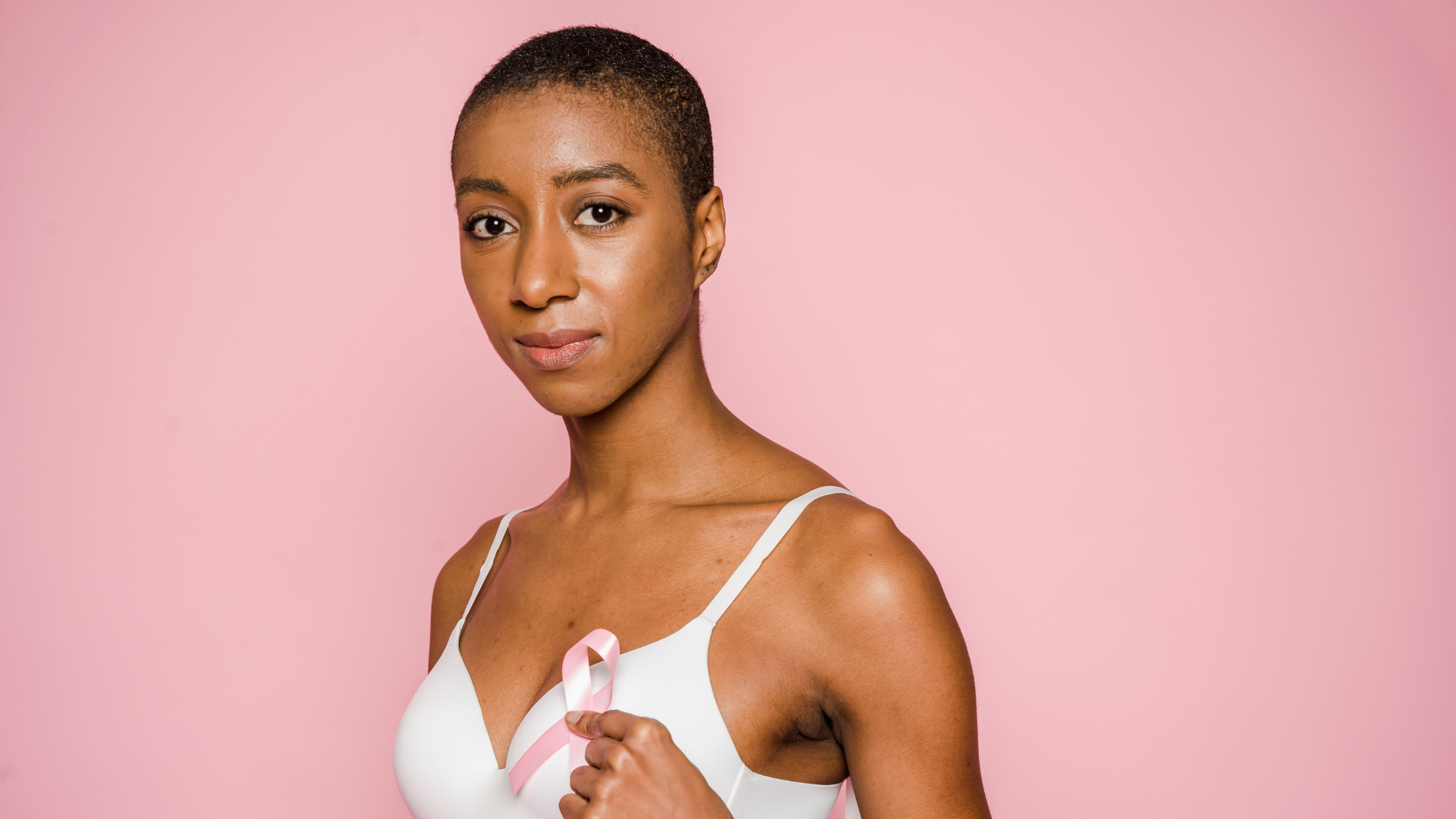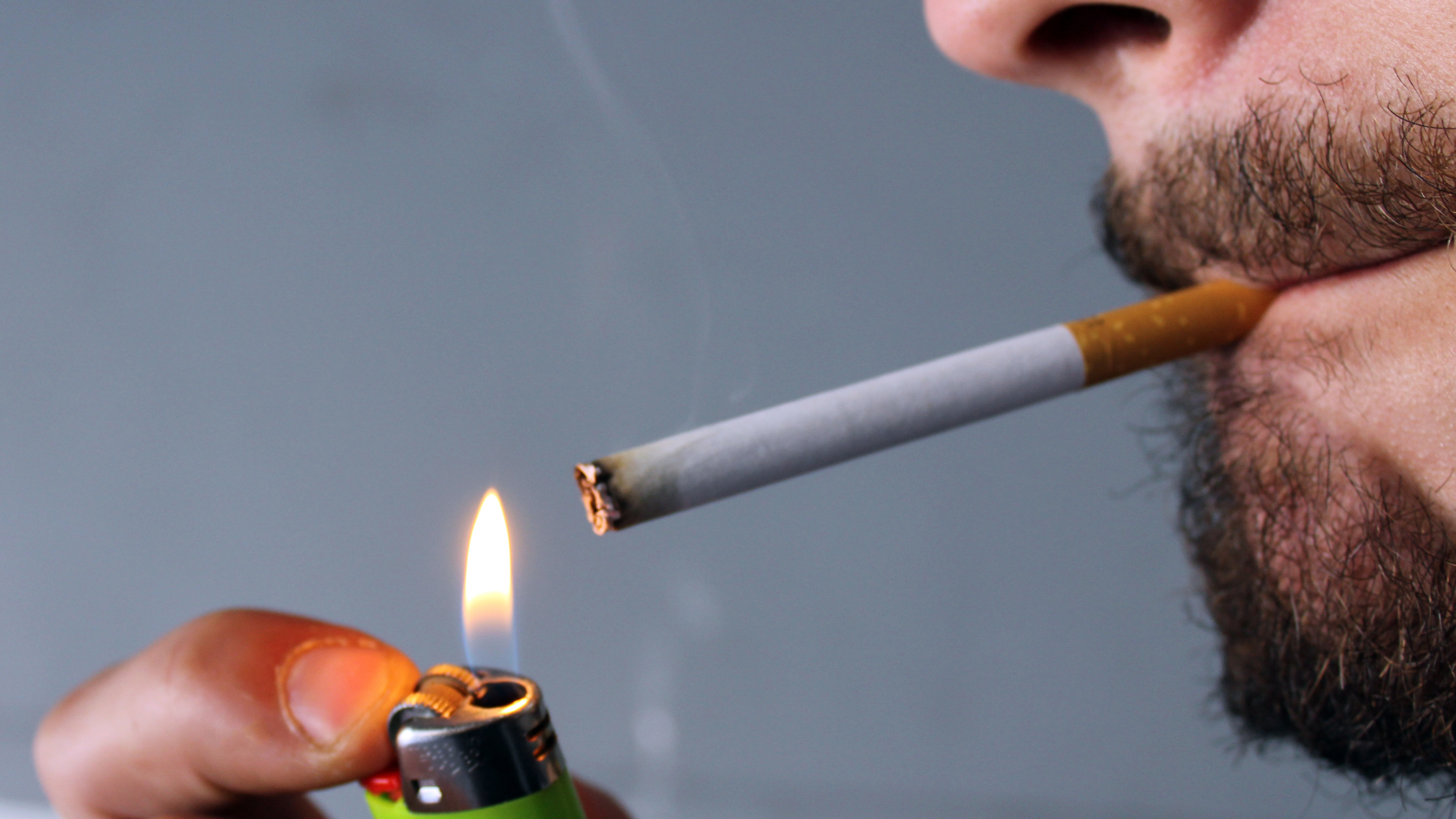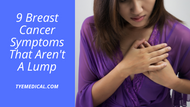9 Breast Cancer Symptoms that Aren’t a Lump
Written by TYE Medical on Aug 31st 2022
Breast cancer is typically diagnosed after you feel a lump in your breast and see your doctor for further examination, usually a mammogram or biopsy. And while a lump is the most commonly detected symptom, it’s not the only warning sign. Breast cancer can cause other visible symptoms even if you haven’t felt a lump.
You may not notice any symptoms at all when in its earlier stages, which is why doctors recommend regular mammograms. Today’s diagnostic technology can detect breast cancer before you feel a lump, and as with all cancers, the earlier the diagnosis the greater your chances of receiving effective treatments.
Here are nine other breast cancer symptoms to be aware of while maintaining routine mammogram checks.
1. Your Skin Changes Texture

Breast cancer can inflame the skin cells in the affected area which can change your skin’s texture. You might notice scaly skin around your nipple and areola. When this happens, it might seem like you’ve been sunburned or have extremely dry skin. Skin thickening on any part of the breast can also be a sign of cancer. You might also be itchy in these areas, but itchiness isn’t a common symptom. A rare type of breast cancer called Paget’s disease may also cause similar skin changes.
But don’t immediately panic if you notice skin changes on one of your breasts. It’s also possible to develop dermatitis and eczema in this area. Just be sure to see your doctor to verify the cause.
2. Your Nipples Produce a Discharge
Nipple discharge can be a breast cancer symptom and the type of discharge varies widely. It can be thin or thick and range in color from clear to milky and from green to yellow or red. The discharge will usually come from one breast but it’s possible for this to happen in both breasts if both of them are cancerous.
Breastfeeding mothers may have a milky discharge, and this is normal. But if the discharge is of any other type you should contact your doctor. Not all nipple discharge indicates cancer, but it should always be checked. Infections, certain medications, and some types of birth control can cause nipple discharge.
3. You Notice Skin Dimpling

Your breasts might not be the first body part that comes to mind when you think of dimples but if you notice it in this unusual area, follow up with your doctor. It could be a sign of inflammatory breast cancer, which is an aggressive type.
You may notice swelling along with dimpling or pitted skin if cancer cells have caused a buildup of lymph fluids in your breast. What does it look like? According to the medical world, the dimpled skin can look like the surface of an orange.
4. Changes in Your Lymph Nodes
You’ve probably had a doctor feel the lymph nodes in your neck and have probably even self-examined them yourself to determine if they’re swollen. Lymph nodes are immune system tissues that are round in shape, filter fluid, and trap potentially harmful cells like bacteria, viruses, and even cancer cells. They’re a crucial part of your immune system.
When breast cancer cells travel, they usually move to the lymph nodes under your arm that are on the same side as the breast with cancer. When this happens, your underarm lymph node can swell. But you might also notice this in the lymph nodes around your collarbone.
A swollen lymph node will feel like a lump but small, firm, enlarged, and possibly tender to touch. But again, if you have a breast infection, it could also affect your lymph nodes in a similar way. It’s also possible that swollen lymph nodes have nothing to do with your breasts. But in any case, it’s best to be seen by your doctor as soon as possible.
5. You Have Breast or Nipple Pain

Since breast cancer causes changes in your skin cells, you may experience pain, tenderness, or discomfort in your breast, even if there is no lump.
Often, breast cancer isn’t painful, but if you do experience pain or discomfort, don’t ignore it. This is still a symptom of breast cancer even if less common. Some women even describe this pain as a burning sensation.
6. Your Nipple Retracts or Inverts
Sometimes cancerous breast cell changes happen behind the nipple, causing it to invert or pull inward and back into your breast. It could also affect the size of your nipple. But keep in mind that sometimes your menstrual cycle can alter your nipple appearance. If you are post-menopause or notice new or lasting nipple changes, contact your doctor for an evaluation.
7. Your Skin Changes Color

Breast cancer can also make your skin appear discolored and inflamed. If you have white or pale skin, it may turn red. If your complexion is darker, you may notice a deep brownish or reddish-brown color.
Trauma to the breast (like a car accident) could cause some discoloration. But if trauma isn’t the case, or if the effects continue, it’s best to seek medical attention to determine if there is cancer present.
8. Your Breast Is Swollen
If even you don’t feel a lump in your breast, cancer can cause swelling. You may notice one is larger in size than the other. If your breasts have always been about the same size, then this change could be a sign of cancer.
When your breast swells, you might notice a tightening of the skin that can be uncomfortable.
9. Your Breast Rapidly Changes Size

Any type of breast cancer can cause swelling and change the size of your breast. But a rapid increase in size could indicate inflammatory breast cancer. This type of cancer is rare but aggressive
It develops when the lymphatic vessels in the skin covering your breast are blocked by cancer cells. Your breast appears swollen and your skin turns a reddish color. Inflammatory breast cancer originates in a localized area but spreads to nearby tissue and possibly the lymph nodes.
Inflammatory breast cancer can be easily misdiagnosed as a breast infection which is a more common cause of breast swelling and redness. If you notice these symptoms, follow up with your doctor.
Is It a Breast Infection or Inflammatory Breast Cancer?
If your breast is red and swollen, your doctor will first want to rule out the possibility of breast infection (mastitis) which is more likely. Your doctor may prescribe antibiotic treatment for a week or two. If your symptoms subside with antibiotics, you won’t require cancer testing.
But if your symptoms don’t improve with this course of treatment, your doctor may consider the possibility of inflammatory breast cancer and recommend testing. You may be scheduled for a mammogram or other diagnostic testing. Typically, you will also have a biopsy to solidify an inflammatory breast cancer diagnosis.
Other Causes of Breast Symptoms

While you should always follow up with a doctor if you experience ongoing breast pain or other changes, there are other causes besides breast cancer. Additional possibilities include:
- Hormonal changes
- Mastitis (breast infection)
- Certain medications
- Cysts
- Eczema
- Chest wall pain
- Back, neck, or shoulder sprains
- Inflamed cartilage between ribs and breastbone
- Scar tissue
- Improper bra fit
Hormonal Changes
The hormonal changes related to menopause can decrease your breast size and make them lumpier. But conversely, as your breast become fattier and less dense during this time, existing lumps may disappear.
Your menstrual cycle can also cause tenderness and swollen breasts. This could even be more painful for some women, and you may even notice lumps. This typically happens just prior to menstruation. But if the symptoms don’t resolve after menstruation, it’s important to see your doctor.
Bra Fit
An often overlooked cause of breast pain is wearing bras that are too tight. When this happens consistently, it can create tenderness and soreness in your breasts. This is especially true around the time of menstruation when your breasts are naturally more tender.
Breast Cysts
It’s also possible for cysts to cause breast changes. Cysts are noncancerous, fluid-filled sacs that occur naturally in response to hormonal changes. They’re usually softer (but not always) and more common in women before menopause. You don’t always experience symptoms when you have cysts, but they can cause breast pain and nipple discharge.
Usually, your doctor won’t treat a cyst unless it is too large or painful. But if you do require treatment, it involves draining fluid from the sac using a needle.
It’s not easy for the average person to tell the difference between a cancerous lump and a cyst. Your primary care provider may be able to tell you if a cyst is more likely but will probably refer you to a breast clinic for further evaluation.
At some point, you will probably have a mammogram and an ultrasound. A breast ultrasound can help doctors determine if the lump is a fluid-filled benign cyst or solid and possibly cancer.
What to Remember
Some breast changes are naturally occurring and mildly uncomfortable. So, there is no need to panic if you notice changes in shape, color, size, or tenderness. But it is important to follow up with your doctor for any symptoms that continue through your menstrual cycle or that appear post-menopause.
It’s best to be proactive and aware of what is normal for you. This will help you notice changes and follow up more quickly. Just because it’s a change on the surface of your breast doesn’t mean you shouldn’t see a doctor. Breast cancer can affect your skin.


